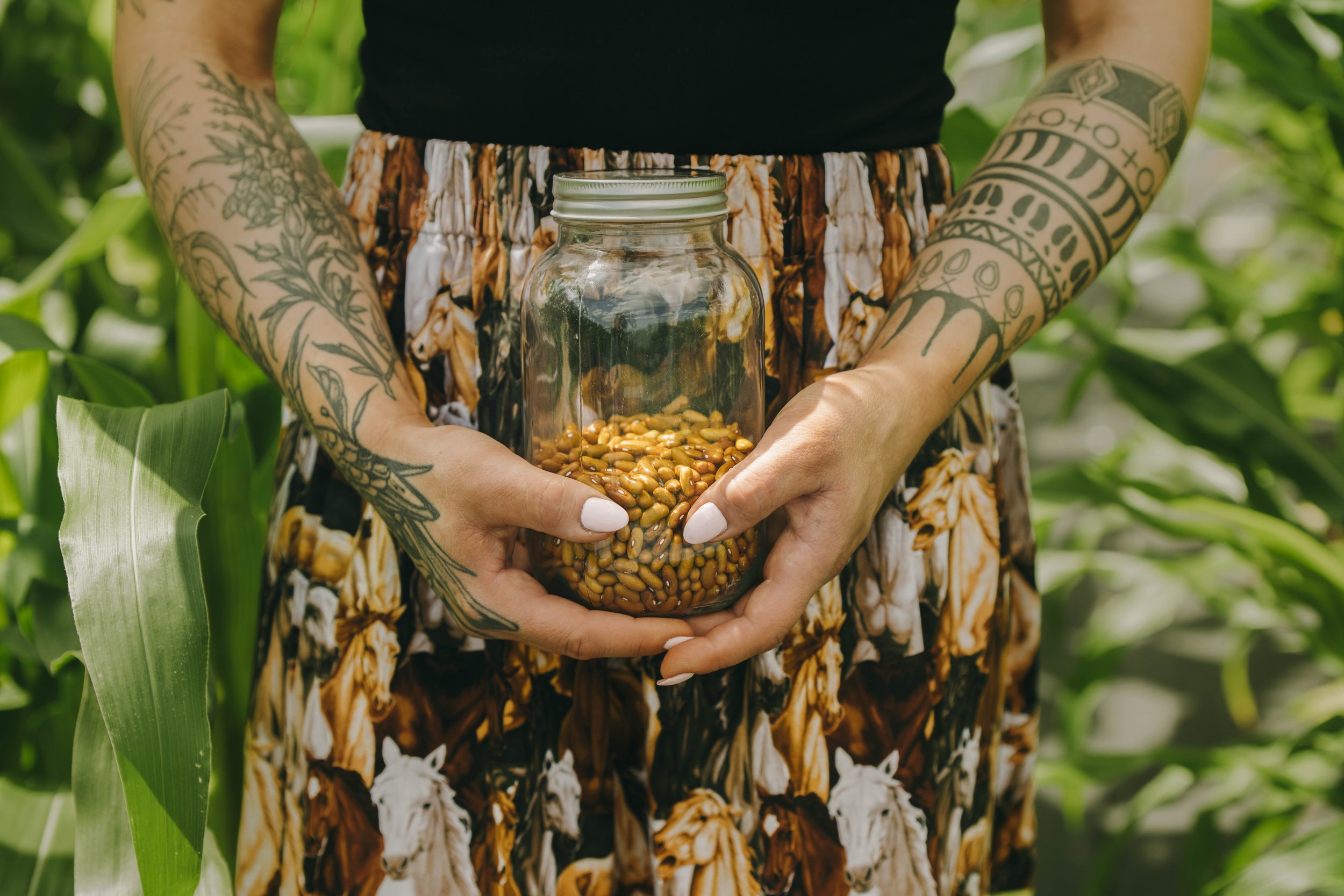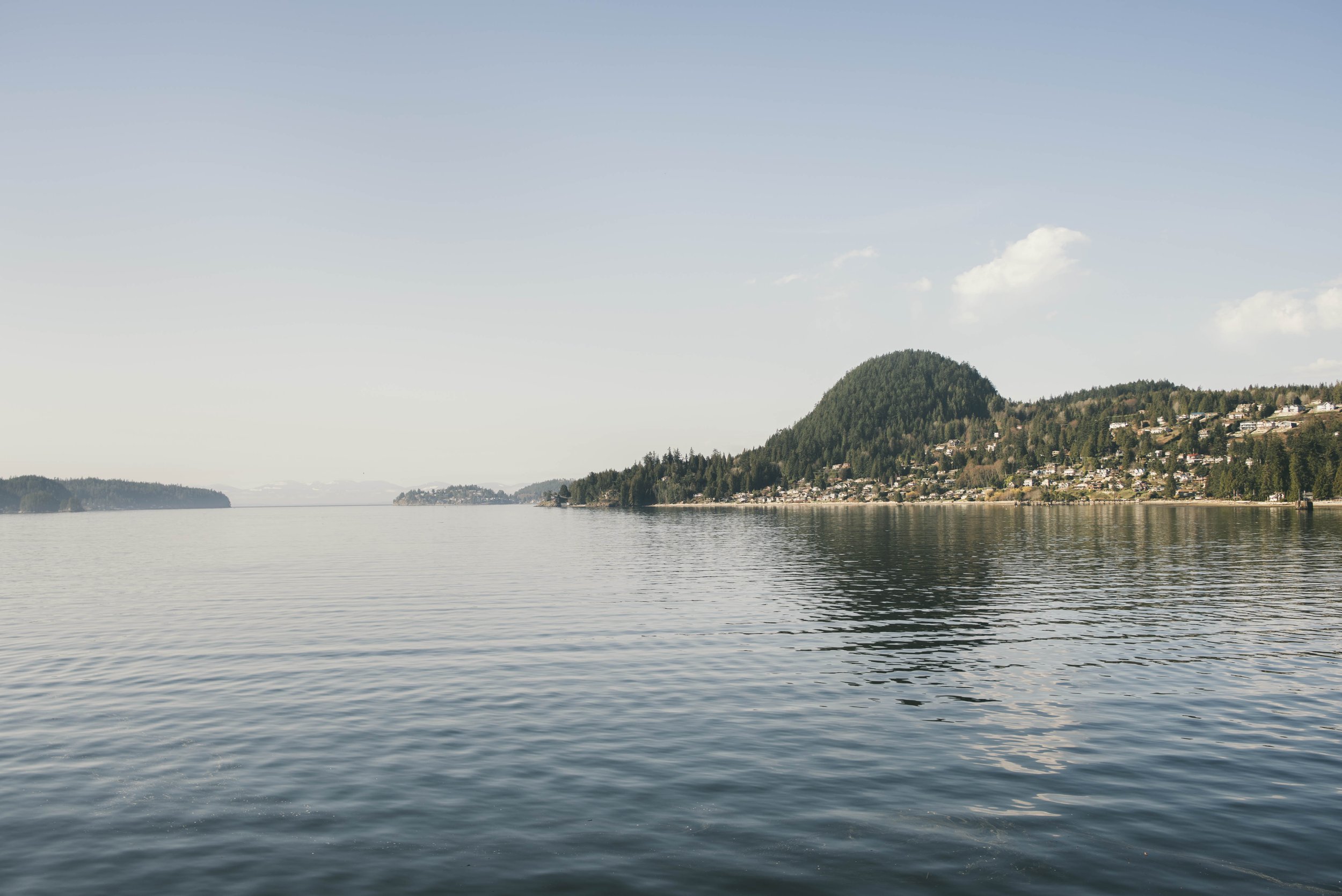I was asked by the Ontario Arts Council to create a piece of artwork for the National Day for Truth and Reconciliation, based on my artistic practice of text, textiles and photography. I was brought back to one line in a poem I wrote a few years ago: “Listen to your ancestors’ dreams”, a reminder to consider those who came before us and the dreams they have for us and our communities. For me, this resonates with September 30 because reconciliation means that everyone strives to create a country in which Indigenous peoples are able to live out their ancestors’ dreams, dreams that many of our families had to bury in order to survive colonization and residential schools. It is up to the Canadian state and all Canadians to move aside and let Indigenous people and communities thrive and to provide support in order for Indigenous generations now and into the future to be what their ancestors dreamed: speaking our languages, practicing our cultures and ceremonies, eating our traditional foods, living in healthy ways, and in respectful relation with one another.
Using a blanket hand sewn with text is a reference to how blankets are close familial objects, passed down between generations, often given as gifts to signify important life moments and rites of passage in many communities and a nod to the seamstresses and sewers that are in my matrilineal line. The idea and practice of dreaming evoked in the text reminds us that even if we weren’t able to spend time with our ancestors or they were lost to our families or communities in the Sixties Scoop or residential school system, child-welfare system or justice system, they can continue to communicate with us and help us through our dreams.
Photo assistant: Alyssa Bardy
Model: Amari Asmar
Portraits for Sephora Canada x NWAC
Last year, Sephora partnered with the Native Women’s Association of Canada to bring together women and gender-diverse people for a conversation on Indigenous beauty, representation, and colonial beauty standards. I was honoured to make portraits of the ten participants to go along with a docu-special for Indigenous People's Day (2023). I haven’t had the chance to share these images before now and I’m excited to finally show them to you all. It’s always a good day to celebrate Indigenous beauty and excellence.
“We have powerful women. People that have come here have spent a lifetime trying to take that power away from us and our people knew how powerful our women were” - Kahentinehtha Horn
Nicole Davies for Sovereign Seeds
As harvest season comes to an end and a light blanket of frost covers our gardens, I wanted to share these portraits of my dear friend Nicole Davies, of @sovereignseedsnetwork, in her garden this summer. Nicole is a Red River Métis, Saulteaux, and settler community organizer, seed keeper, and researcher. She is a loving and fierce advocate for Indigenous food sovereignty and travels between communities to facilitate knowledge sharing. In her words, "For Indigenous people, seed and garden stewardship is a site of decolonial governance. It is an act of mutual aid, keeping alive ancestral economies through the trading, sharing, and gifting of seeds, food, medicines, and teachings... It is a reminder of ways of life that predate police and prisons, pesticides and pipelines, and it is a promise that these worlds are possible again. It is a refusal of the homogeneity and hegemony of white supremacist food production. It is a meditative process of remembering and re-writing and re-rooting ourselves and our food relatives in a society that wants to displace us and erase us. It is a healing thread that connects us forward and backwards intergenerationally as we imagine our ancestors and descendants peeling back ears of the same flint corn and cracking open pods of the same speckled beans. It is a ceremonial practice of time-weaving futurisms: when we plant and harvest, we tend to something that we might not live to see flourish or benefit us, whether it be the offerings of that year’s yield or the years’ long improvements we’ve made to a seed variety’s genetic stability. It is a complex and loving act of intertribal decision-making….”
Read the full article by Davies here.
My college honoured me with an award at their graduation ceremony this month!
Honorary diplomas are awarded at Convocation to individuals who embody the College’s core values through their outstanding achievements and community impact as examples of excellence for students and graduates.
https://loyalistcollege.com/news/loyalist-college-to-award-seven-honorary-diplomas-at-convocation-ceremonies-june-6-9/
Our podcast wins at Digital Publishing Awards!
"The Art of Sovereignty" is now an award-winning podcast!! We got silver at the Digital Publishing Awards in the Best Podcast: Art, Culture, and Society category.
Listen to the Art of Sovereignty on Apple Podcasts, Spotify, or wherever you get your Podcasts!
Toronto Star Indigenous Tourism
I had the great fortune to work on my first travel journalism piece - taking me to the Sunshine Coast to explore Indigenous tourism in BC. Read the full story in the Toronto Star.
On a crisp spring morning, our seaplane climbs above the Sechelt Inlet, a fiord that nearly cleaves the Sechelt Peninsula from British Columbia’s mainland. Once we’re in the air, Candace Campo’s words in she shashishalhem, the language of the shíshálh Nation, reach my ears. This is my introduction to the Sunshine Coast.
Without direct road access to the rest of B.C., the Sunshine Coast, which stretches 180 kilometres between Howe Sound and Desolation Sound, is only accessible by ferry, private boat or float plane. Travelling on or over water is a part of life in this region, the traditional territories of the Skwxwú7mesh, shíshálh, Tla’amin, Klahoose and Homalco Nations…
…Their community has a sustainable practice for harvesting cedar, making a horizontal cut into the tree trunk only when the sap is running in the spring. This method is thousands of years old and allows the tree to repair itself. I’m told the same tree is never harvested twice, a practice meant to maintain the cedar for future generations.
Sechelt’s Red Cedar Woman studio, where Coast Salish weaver and fibre artist Jessica Silvey and her family teach weaving as the ancient method of combining elements to create a new connected whole
Cedar hat weaver Shy Watters, standing among her creations.
About a 30-minute drive from Madeira Park’s Painted Boat Resort Spa & Marina, where we’re staying, we meet to walk through the forest, while Campo and her co-guide, Richard Till, speak to us about the plants, trees, animals, and history of this place.
Touching a tree trunk, Campo explains that cedar holds a sacred place in the life of shíshálh and other West Coast Nations. “We understand how the cedar tree came into our lives because there’s a story,” she says…
Throat Singer Qattuu creates lullaby song for her daughter Aleah - CBC story
Qattuu with her daughter Aleah
Our Podcast is Nominated for a Digital Publishing Award!
The Art of Sovereignty is nominated for a 2023 Digital Publishing Award alongside some really amazing podcasts. Check out the other nominees and the full list of categories here. And if you haven't listened to The Art of Sovereignty podcast yet - check us out here or wherever you listen to podcasts.
My photography featured in Broadview Magazine
Nyá:wen to Broadview Magazine for the feature on my photo series “Rematriate” following the Rematriation of heirloom seeds back to our community and the creation of the “Passing the Seeds” wampum belt. The seeds are now grown at the Kenhtè:ke Seed Sanctuary.
Installation view of Shelby Lisk: Shé:kon se’onhwentsyà:ke ratinékere tsi nihá:ti nè:ne yesanorónhkhwa (there are still people in the world that love you), on view 5 March–8 May 2022 at Agnes Etherington Art Centre. Photo: Paul Litherland
Exhibition wins at Ontario Galleries Awards!
Our exhibition won exhibition of the year (monographic, under $20,000). So grateful to the Agnes Etherington Art Centre for supporting my work but especially to the two most kind, gentle, thoughtful curators Suzanne van de Meerendonk and Michelle Bunton for the care they showed to me, my work & community in putting together the exhibition Shé:kon se’onhwentsyà:ke ratinékere tsi nihá:ti nè:ne yesanorónhkhwa (there are still people in the world that love you)
Nyá:wen and love to Hilda Nicholas for her beautiful translations and Kanyen’keha support on this project.
A big thank you to Sam at Shoebox Studio for their attention to detail in printing my work for this show.
Views of Tetewatsinehta’rá:ron – let’s all bead! with Shelby Lisk and Liv Rondeau at Agnes Etherington Art Centre. Photos: Tim Forbes
And nyá:wen to Liv Rondeau for helping me put together a beautiful beading workshop during the show.























































